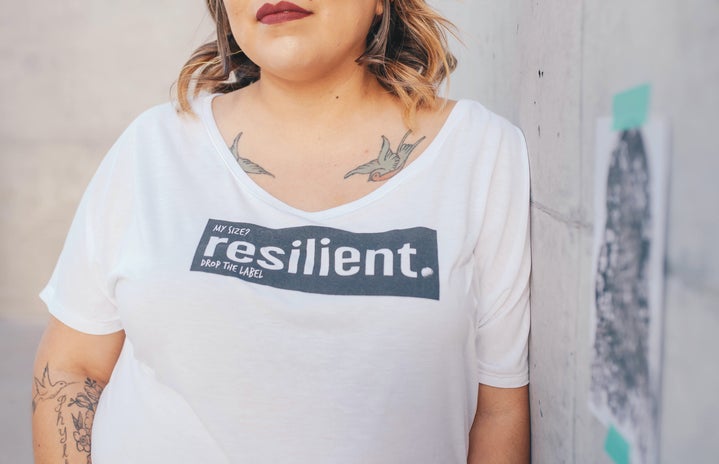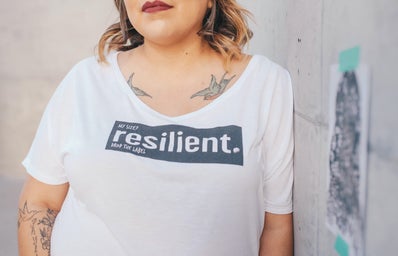Ellis Jones is the editor-in-chief of Vice Magazine as of September, 2015. She is the youngest and first female editor-in-chief in Vice’s twenty-year history and started there as an intern. She left Vice for nine months to seek other work, but came back and climbed up the ladder to where she is today. Vice is a well-established print and online magazine that covers a little bit of everything; from popular culture and travel to the political debate and police brutality. Vice Media also has a film production company, record label and publishing imprint. For those of you interested in going into journalism, Jones offers an excellant perspective on scheduling, goals, leadership, developing a readership and leaving your own signature on a collaborated project.
Photo courtesy of Cole Seidner.
Cole Seidner: What is a typical workday for you?
Ellis Jones: I work on a monthly schedule, so the weeks kind of differ. The first week of the month and the last week of the month are typically a bit slower whereas the middle two weeks are always the busiest because that’s when we’re working on the design of the magazine, proofreading and editing, and things can be quite hectic working to get it ready in time. We’re working on the November issue now. We’ll start designing it next week. The following week we’ll close it, and then it’ll probably come out a week or two later. I don’t think we’re a typical magazine in that fashion, other magazines probably work a bit further ahead than us. So depending on the week, if it’s slower, I’ll be catching up on emails, talking to the team to see what they’re working on, like what stories are definitely going to happen for the next issue, going to meetings, things like that. By the time we get to design week, that’s really where everything should have already been fact-checked and edited and all the photo work would have been finalized. Then it’s a matter of working with our designer to get everything laid out.
CS: You said in an interview about your vision being Journalism with a capital J. I was wondering what that meant, and what journalism with a lowercase j was to you?
EJ: I don’t remember saying that, actually. But to me, I think that means doing stories that are important, that maybe might be scary to do, that people are concerned with. That’s always been the mantra of Vice. Maybe the New York Times or CNN are covering one angle of the story that everyone is talking about, but perhaps there’s a story within that that’s being missed or no one’s doing the follow up. It’s just really important to do stories that matter to us. So that’s why we made our prison issue. There’s so much going on with overcrowded prisons and stories about police brutality. Even with the 2016 election, you see everyone talking about prison reform. Something is wrong and we need to fix the system… So for us, I think it’s just covering the things that we think are important and I think that our audience should think are important. Because the company tends to be known as something the millennials love, but I kind of hate that association. I like to think that our magazine is something that appeals to everybody, no matter the age range.
CS: You mentioned previous editors and how they have their sort of fingerprint on Vice. If you had to describe your fingerprint, what would it be and how do you go about continuing what Vice stands for but with your own flair?
EJ: I’ve been at Vice since about 2008. I started as an intern, left to work somewhere else briefly, and then I came back. So I’ve been in this role since September. It’s hard to pinpoint what legacy I want to leave. Vice has changed a lot over the years. I think back in the day it was seen as more brash and kind of controversial… So I think the magazine kind of grows and changes as the company grows. And I’m happy with the way we’re progressing. Sometimes I feel this pressure—knowing I’m the fourth or fifth editor-in-chief, and the first female to do it—to not change things too much. But I put that pressure on myself, I don’t feel it from anyone else. It’s easy to think, “Oh well, it’s been done this way for so long, so maybe we should keep doing it the same way.” But also, I’m my own person and naturally will have different opinions on what the magazine should be compared to past EICs. But I work with my team to figure out what we want to do. Almost everything is written and produced and edited by a younger staff, which I think is great, it already provides a certain perspective that you might not get from older media like CNN or The New York Times.
CS: From your description of your day, it sounds very collaborative. Is it all-collaborative or are there moments of doing your own thing?
EJ: I think it is really collaborative because that’s the kind of the person that I am. I don’t like just making decisions and being like, “This is what we’re doing, I don’t care what any of you guys say, we’re doing it.” I like to know that the rest of my staff agrees with what we’re doing. I don’t think some of the other past EICs were necessarily like that. Jesse Pearson was the longest-running editor-in-chief that we had, and he was great, but he had an office with a door that was frequently closed. It felt like there was a level of separateness back then when I was a lower-level staffer. But our office plan itself is very open. I sit in the middle of all the rest of my staff. There are very few actual offices here except maybe a few of the higher executives, and even some of them don’t have their own offices. So just in the nature of how the office is formatted is very collaborative. I much prefer collaboration because I might be wrong about something and I’d want my staff to be able to speak up and say so. I like to know what their suggestions are.
CS: How many hours are you putting in a day or a week?
EJ: Our hours are 9:30 a.m. to 6:30 p.m. If it’s a slower week, probably about nine hours a day. But I’ve got email on my phone; you can’t help but sort of check it before and after work. There’s not really a pressure to do that, I just do it because it’ll help alleviate some pressure at work later. Or if it’s urgent, I’ll just take care of it right away. But during the really busier weeks I’ve definitely done 15 or 16-hour days if we’re uploading the issue that night and need to tie up any loose ends and give it one last proofread. But that’s rare.
CS: Other than email, how much work are you bringing home with you?
EJ: Ideally not too much. I think the definition of ‘Editor-in-Chief’ really differs depending on the publication. I think that Vogue or Vanity Fair or The New York Times, I’m assuming their jobs might be very different from what I do. To be honest, I haven’t written in such a long time. My role is more about approving stories and saying yes to this, no to that, and taking those bigger meetings that I don’t want the rest of my staff to have to go to. So I don’t take home too much work unless I’m editing something that I didn’t get finished during work hours. Or sometimes we’re proofreading stories and I get too busy during the day so I might read some of those stories at home. But for the most part, I don’t have to take work home too much. Which is nice, you need that time to yourself to decompress, or you’ll just go crazy.
CS: Do you miss the writing aspect of work?
EJ: I feel bad saying no, but to be honest, I don’t. I went to Georgia State University and was in college for a while not really knowing what I wanted to do. So my counselor took me aside, and said, you can’t keep taking electives, you need to pick something. So I thought, okay, I’ve always done well at writing. I thought journalism would be a good choice because that’s a job that will never go away; it felt like a secure choice. So I chose that because I knew I was good at it and it would work for me. So when I got to Vice as an intern and then as an associate editor, there was a pressure to write or come up with story ideas every week. But I think that pressure backfired to where I could not think of anything to write about. I think one time I actually googled “how to come up with good stories” or something when my boss walked by and was like, “What are you doing?” I know that I can be a decent writer but if I can’t figure out any good stories… So I gravitated more towards the managerial side of things. I’m really organized, I’m really efficient, and I can get things done, so I saw that as my opportunity to carve a place for myself at the company. So when Jesse Pearson left and when Rocco was taking over as editor-in-chief, I’d been at the company almost as long as him, so we had this great working relationship. But he was more of a top-level big idea guy that hated details, hated budgets, and hated deadlines. I knew by taking over that side of things, I would have a secure job and it worked for me. The pressure of writing went away. I felt if it was really important to me, I would have kept doing it. I mean as editor-in-chief I could say, “Well I want to write about this, and no one could say no.” But I feel like at this point in time, there are people who can say it better than me. What I figured out was that I enjoy reading other people’s stories and helping pick the photos and decide on the layout? Figuring out how the story fits in the magazine. How do we make it the best story it can be?

